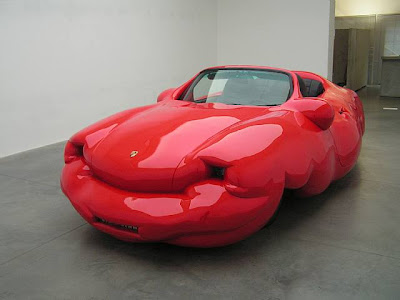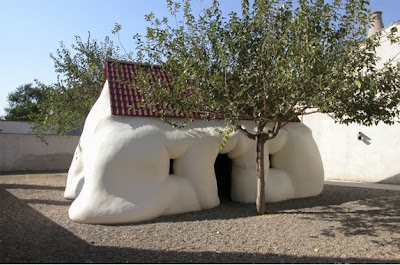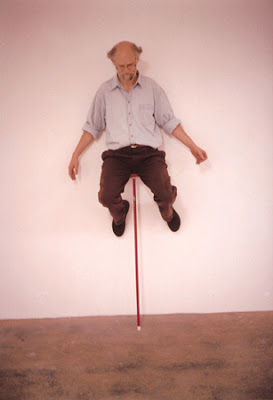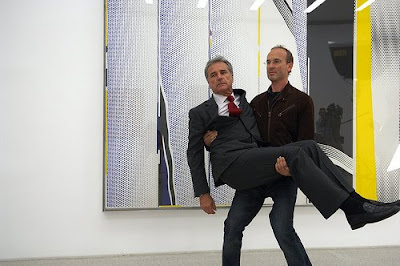ARCHIVES
red hot chili peppers videos, the art of erwin wurm, and self censorship
I was looking at this amazing music video for the red hot chili peppers

and other modified sculpture projects.

But his best work and most indicative of his line of thinking are his actions and interventions, especially the one minute sculptures referenced in the music video.



Rather than being left with my train of thought at the station, I became intrigued with what kind of filmmaker would encourage a band from the eighties to make a music video riffing on the art of the sixties. On the Mark Romanek’s website (the man responsible for the video)I found my answer. He was educated at the school of the art institute of Chicago and he sights a long list of visual artists of the sixties as his influences. I was further intrigued to find out that he was the same person responsible for the full length film one hour photo(which i kinda dug). In needing to know more I dove right into his faq page and I found a quote he used as advice for aspiring artists/ filmakers, that resonated with me.
“you have to fight every day to stop censoring yourself. and you never have anyone else to blame when you do. what happens to artists is that it’s not that somebody’s standing in their way, it’s that their own selves are standing in their way. the compromise really isn’t how or what you do, the techniques you use, or even the content, but really the compromise is beginning to feel a lack of confidence in your innermost thoughts. and if you don’t put these innermost thoughts on the screen then you are looking down on not only your audience but the people you work with, and that’s what makes so many people working out there unhappy. these innermost thoughts become less and less a part of you and once you lose them then you don’t have anything else. so many people have so much to say and there are so many really worthwhile things to say that it seems impossible that we could cut ourselves off from this whole avenue of enormous excitement.” from cassavetes on cassavetes edited by raymond carney
i lifted this from the mark romanek website faq section
Self censorship is one of those areas I am incredibly familiar with. I am also incredibly conflicted about the function of self censorship. I am a big fan of art, music, literature and people in general who consider the context in which they are presenting themselves. Sometimes I think too much about this. I am incredibly concerned with the audiences experience of art and and the physical space it inhabits and give great considerations to this, but at the same time I am making work to satisfy myself. The trick is that half of my output is a body of work I have never shown as it’s own independent direction. That body of work includes sets of drawings, videos and photographs. These exercises help fuel my understanding of the more public work I have been undertaking. I always censor myself when considering shows and ideas to shop around, or more specifically showing these to people when they come for studio visits. On some level this has allowed my drawings, photos and other works to develop out of the light of total exposure. It is true that when I exhibit or show some object or work on paper, on some level it kills the work for me. I know these rules are arbitrary but I am able to put so much into the incredibly public art I have been making because I have the complete opposite work running in a different direction. If the installations are the ultimate blurring of the boundary between the space where the art is created and the place where it is exhibited , the drawings will always be bound to the mental space in which they were created and conceived. On a side note I have noticed a re-emergence of the hand in contemporary art and of works on paper in particular. My own idea about why this is happening is pretty simple, works on paper and drawings are the most sincere gesture one can make as an artist. As color photography, and design based art seem to capture the larger interest of the public, myself included, I think the natural reaction by artists, either consciously or unconsciously is to make more humble work on paper, or to present drawings as finished works. I can’t be sure of any of this but sometimes watching a red hot chili peppers video on you tube the same week that I am reading over brian odougherty’s essay Studio and Cube, the follow up to inside the white cube, can lead to a re-evaluation of what one is observing.